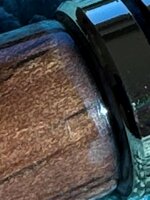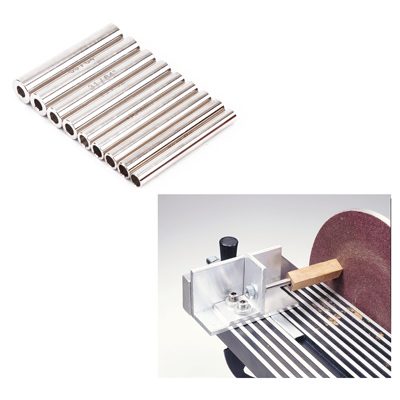sequoia
Member
Hi All,
I haven't turned in many years and finally got the urge to start a holiday present. I turned a piece of Koa I picked-up a long time ago when I was in Hawaii. Never tried a CA finish before and I was really impressed with the results and depth that it adds to Koa. Unfortunately, when I had pressed the pen together, parts of the finish started (mostly towards the ends) to crack and I'd like your thoughts on what I could do differently next time to avoid this.
Prior to applying the CA, I dry sanded to 1500 and applied some EEE ultrashine.
I then I used some old (5 year plus) PSI CA thin for finishing and built-up at least 10 coats and used an activator. The CA glue was kept in the fridge all this time and never dried-up. I applied the CA using paper towels and lowered the lathe to it's lowest speed.
Afterwards, I started off with 600 grit to 1500 and then wet sanded with micro mesh up to 12000.
I'm really not sure what was the culprit for the cracking during pressing, but I would appreciate any tips and critiques.
I'm not adversed to trying another glue or combination of glues if that will eleviate the cracking.
Thank you,
Matt
I haven't turned in many years and finally got the urge to start a holiday present. I turned a piece of Koa I picked-up a long time ago when I was in Hawaii. Never tried a CA finish before and I was really impressed with the results and depth that it adds to Koa. Unfortunately, when I had pressed the pen together, parts of the finish started (mostly towards the ends) to crack and I'd like your thoughts on what I could do differently next time to avoid this.
Prior to applying the CA, I dry sanded to 1500 and applied some EEE ultrashine.
I then I used some old (5 year plus) PSI CA thin for finishing and built-up at least 10 coats and used an activator. The CA glue was kept in the fridge all this time and never dried-up. I applied the CA using paper towels and lowered the lathe to it's lowest speed.
Afterwards, I started off with 600 grit to 1500 and then wet sanded with micro mesh up to 12000.
I'm really not sure what was the culprit for the cracking during pressing, but I would appreciate any tips and critiques.
I'm not adversed to trying another glue or combination of glues if that will eleviate the cracking.
Thank you,
Matt



